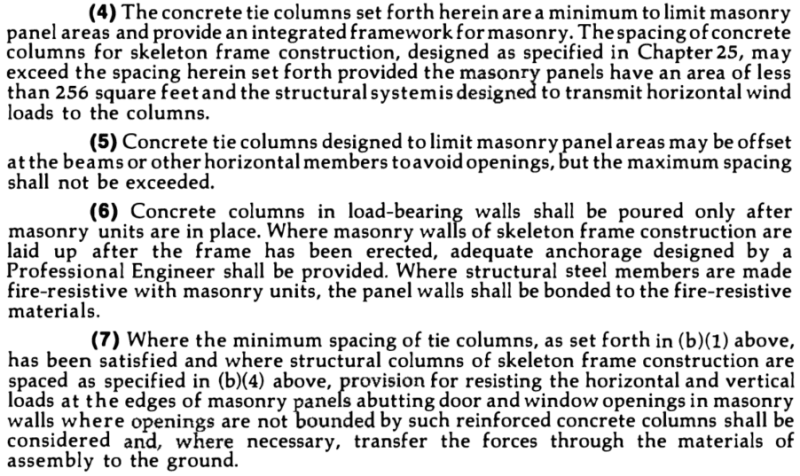Hello fellows,
This question is related to masonry construction in Florida (specially south FL). Please feel free to chime in if you have any experience with the FBC. I have seen plans (specially for housing developments) where the EOR specifies a 8x8 CMU bond beam at the roof level (2 story structure) and a 8x16 CMU bond beam at the 2nd fl level. I know developers love using this instead of a CIP tie beam because its more budget friendly. I have not been able to find anything on the FBC that would allow this specific CMU bond beam situation. The only section that talks about it and allows something similar (only for 1-story R-3 occupancy) is FBC 2121.2.3.2.
Am I missing another chapter or section of interest? Is this maybe an old design practice that is being carried over and it's being overlooked by design professionals and plan reviewers?
Any help or comments would be greatly appreciated.
Thank you!
This question is related to masonry construction in Florida (specially south FL). Please feel free to chime in if you have any experience with the FBC. I have seen plans (specially for housing developments) where the EOR specifies a 8x8 CMU bond beam at the roof level (2 story structure) and a 8x16 CMU bond beam at the 2nd fl level. I know developers love using this instead of a CIP tie beam because its more budget friendly. I have not been able to find anything on the FBC that would allow this specific CMU bond beam situation. The only section that talks about it and allows something similar (only for 1-story R-3 occupancy) is FBC 2121.2.3.2.
Am I missing another chapter or section of interest? Is this maybe an old design practice that is being carried over and it's being overlooked by design professionals and plan reviewers?
Any help or comments would be greatly appreciated.
Thank you!


